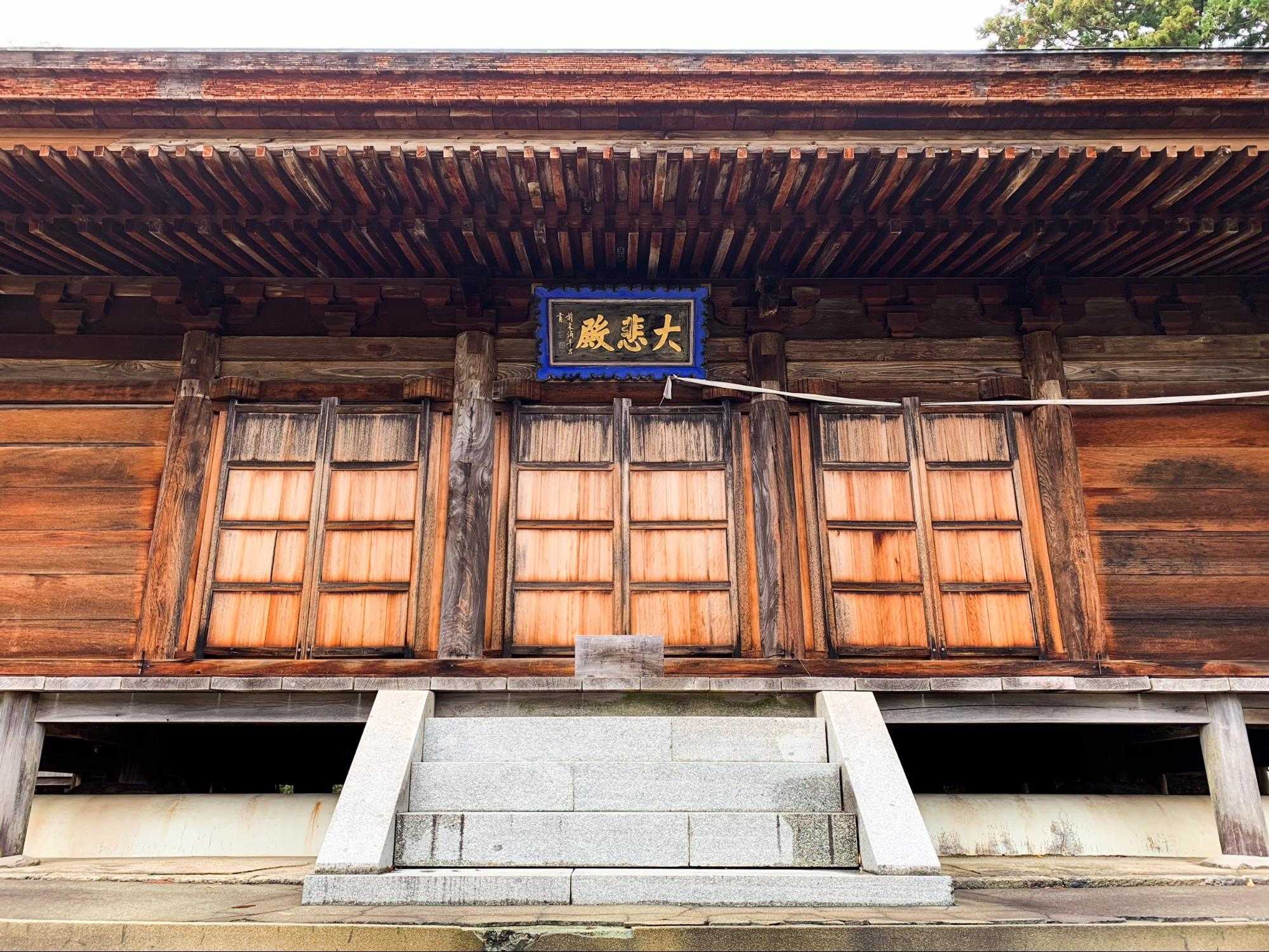We throng the streets of Japan for its cherry blossoms in spring, its bright vermilion torii gates, and its technicolour cities – however, there is much that has yet to be uncovered in the vast and culturally complex country that is Japan.
Just two to three hours away from the touristy favourites of Osaka and Kyoto is Northern Kansai – an undiscovered coastal region of Japan, encompassing Toyooka City and the Kyoto by the Sea region. A gateway to breezy seasides, rural landscapes, hot springs and some of the freshest seafood in the Land of the Rising Sun, this region offers both the rich culture of Kyoto City and the beachy charms of Okinawa.
Easily accessible with a JR West Kansai Wide Area Pass, here’s why you need to explore the road less travelled and visit Northern Kansai.
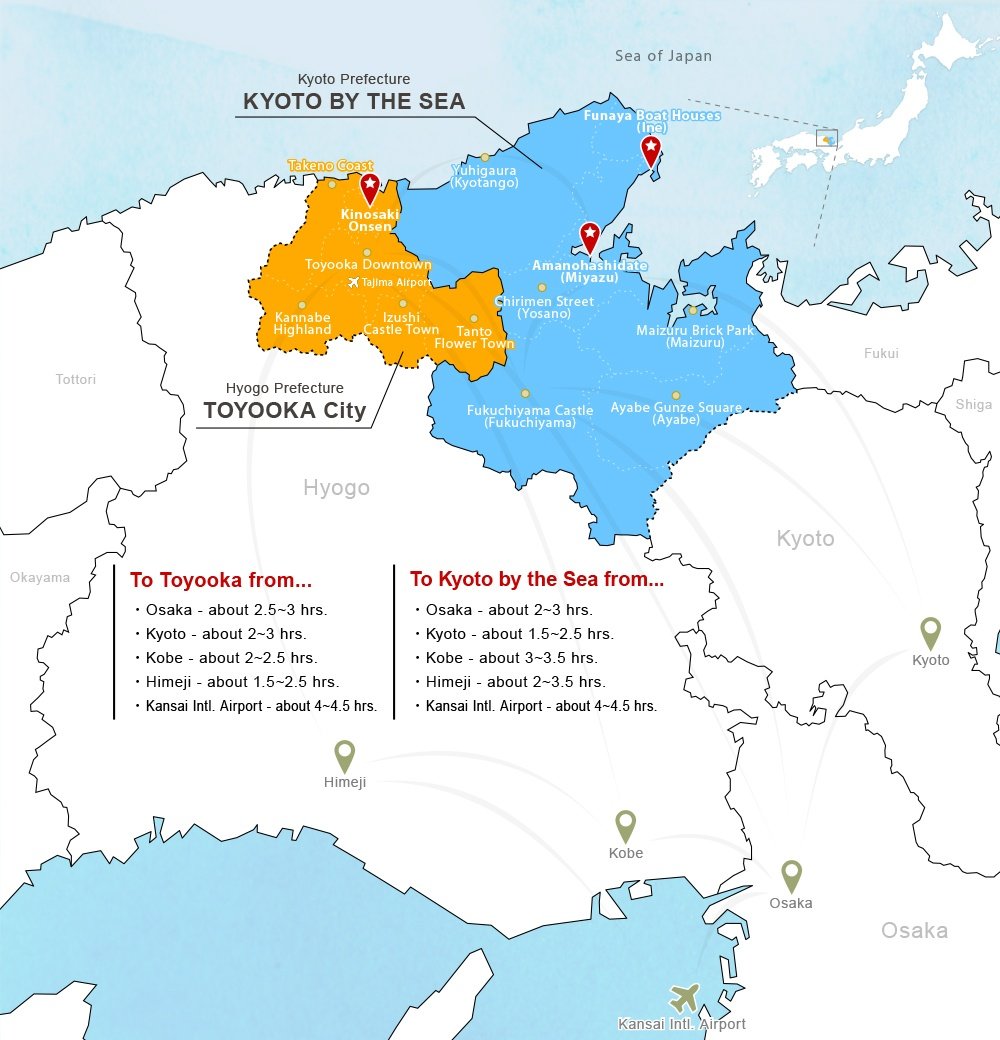
Image credit: Visit Northern Kansai
Kyoto by the Sea
Comprising of five cities and two towns – namely Fukuchiyama City, Ayabe City, Maizuru City, Miyazu City, Kyotango City, Yosano Town and Ine Town – despite its name, Kyoto by the Sea isn’t, in fact, part of the Kyoto City that we know and adore.
Part of the larger Kyoto Prefecture and facing the Sea of Japan, this seaside rendezvous is said to have been the origins of modern civilisation in ancient Japan and also the birthplace of Japan’s food culture.
Miyazu City
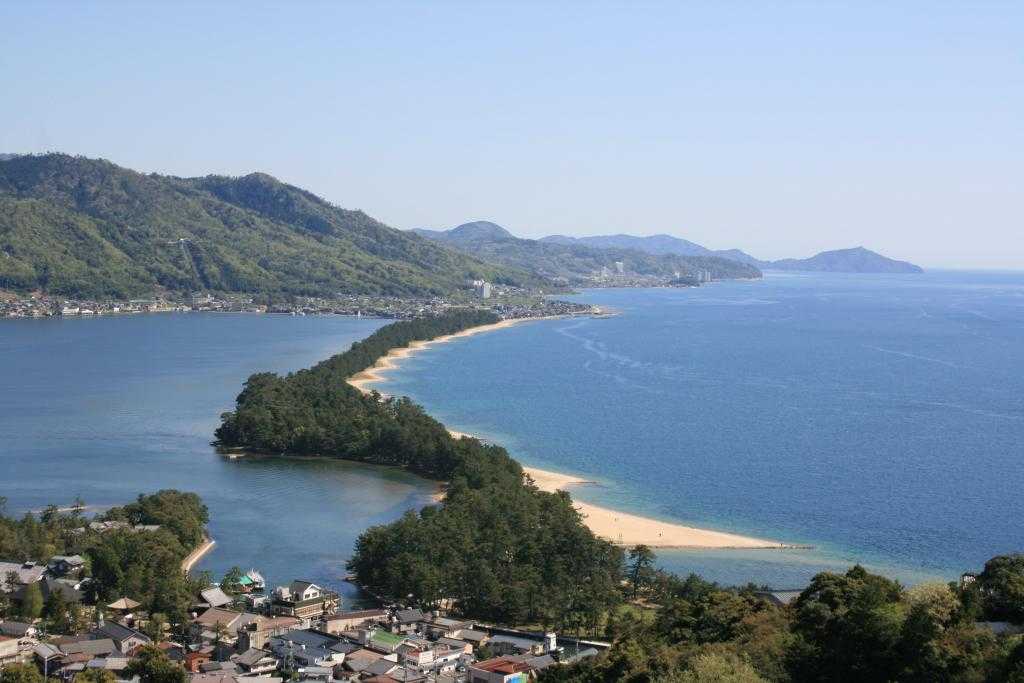
Image credit: View from Amanohashidate View Land | Kyoto by the Sea
Just 2 hours away from Kyoto City by JR is Amanohashidate (or “The Bridge to Heaven”), a 3.6-kilometre sandbar that is known as one of Japan’s Three Scenic Views. Go on a leisurely cycle across the sandbar to admire the 8,000 Japanese black pine trees that flank its sides, or enjoy seaside views of the sandbar on a sightseeing boat.
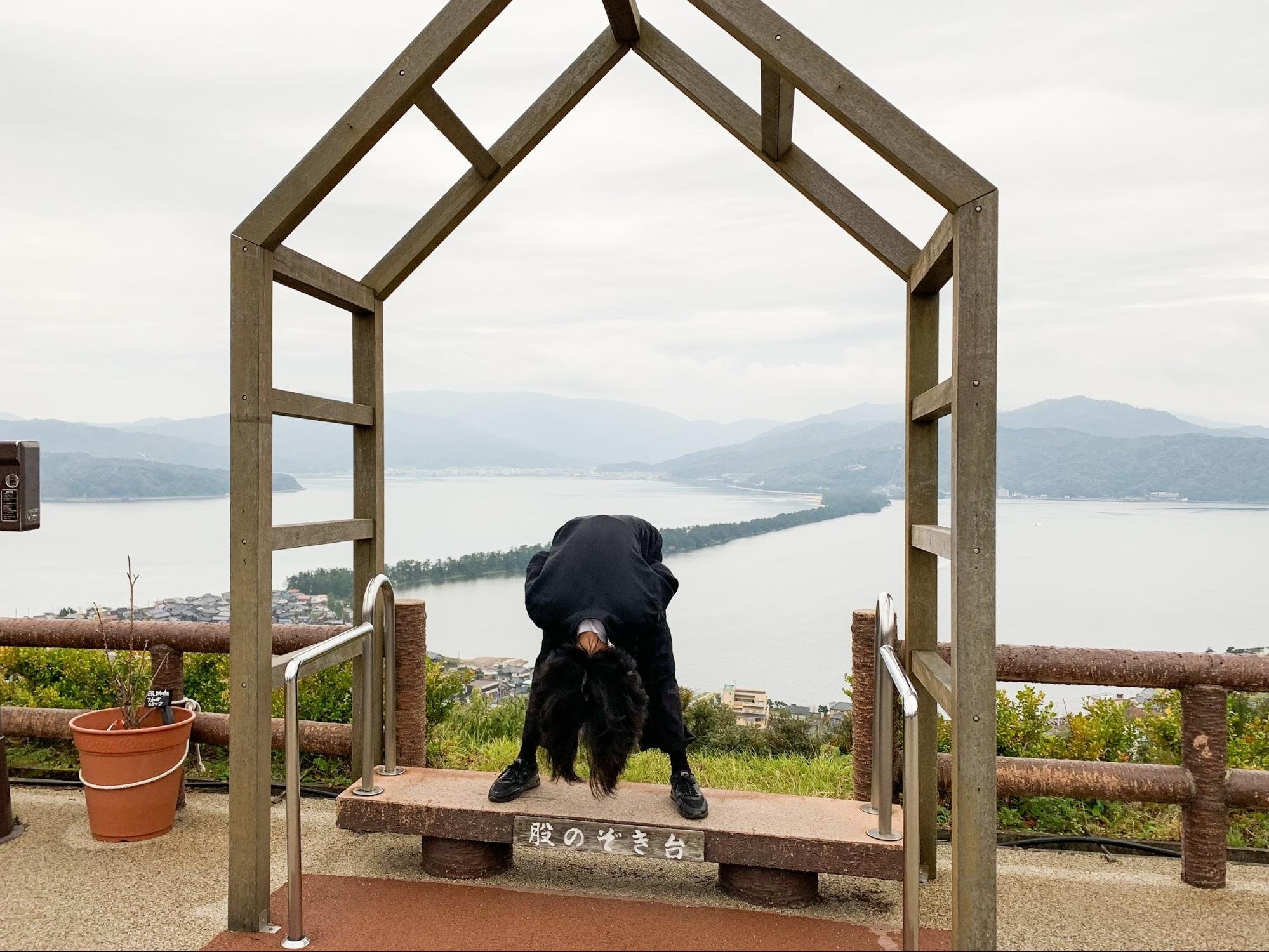
Take a chairlift, cable car or monorail up to either of the two observatories at opposite ends of the sandbar – Kasamatsu Park or Amanohashidate View Land – and find out why it’s believed that Amanohashidate is a pathway that connects heaven and earth.
View the sandbar matanozoki (upside down and looking through your legs) and try to make out the image of a bridge to heaven or of a dragon ascending to the heavens, depending on which side you are viewing it from. If you’re travelling with kids, there’s even a small amusement park at Amanohashidate View Land, complete with a ferris wheel and other theme park rides, perfect for the little ones!
While Amanohashidate sees visitors all year round, visit during the winter to be treated to whimsical views of the sandbar, blanketed in a thick cover of white snow.
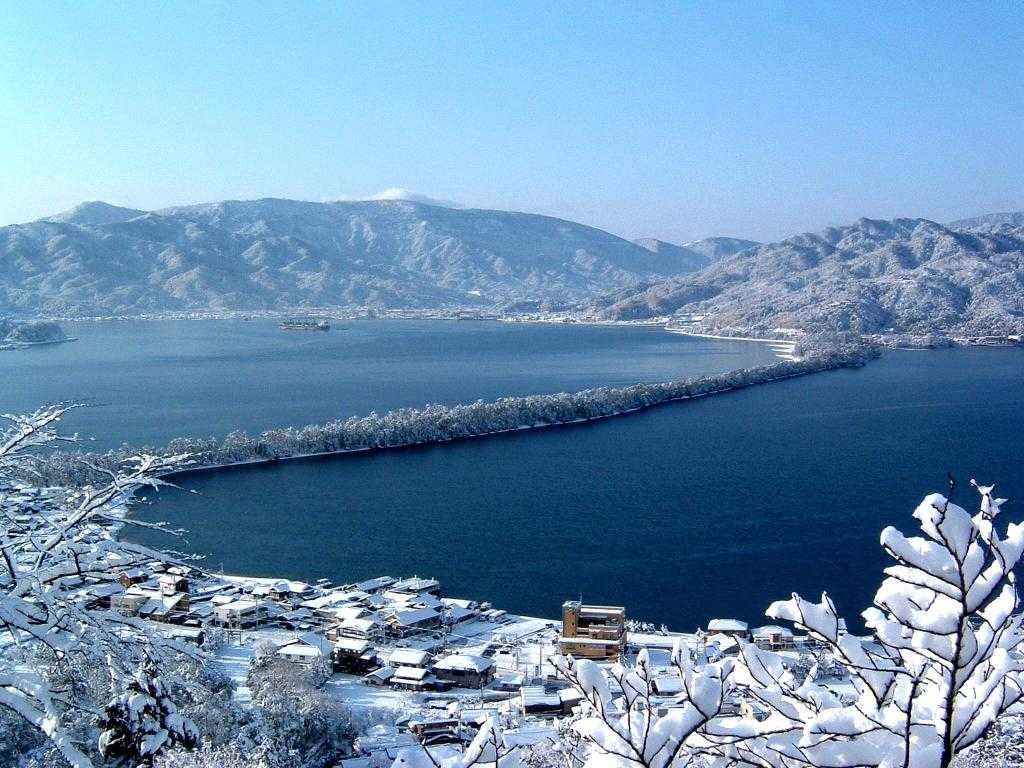
Image credit: View from Kasamatsu Park in winter | Kyoto by the Sea
But Amanohashidate is more than just its picture perfect views. A Shinto (the traditional religion of Japan) and Buddhist sanctuary, the area is home to Motoise Komo Shrine – a shrine which holds one of the highest prestige in Japan – and Chionji Temple – a temple which enshrines one of Japan’s most important statues of Monju Bosatsu (Buddha of Wisdom). In fact, it is said that paying your respects at the latter and eating Chie-no-Mochi (a rice cake with sweet bean paste) sold in front of the grounds of the temple will bless you with wisdom!
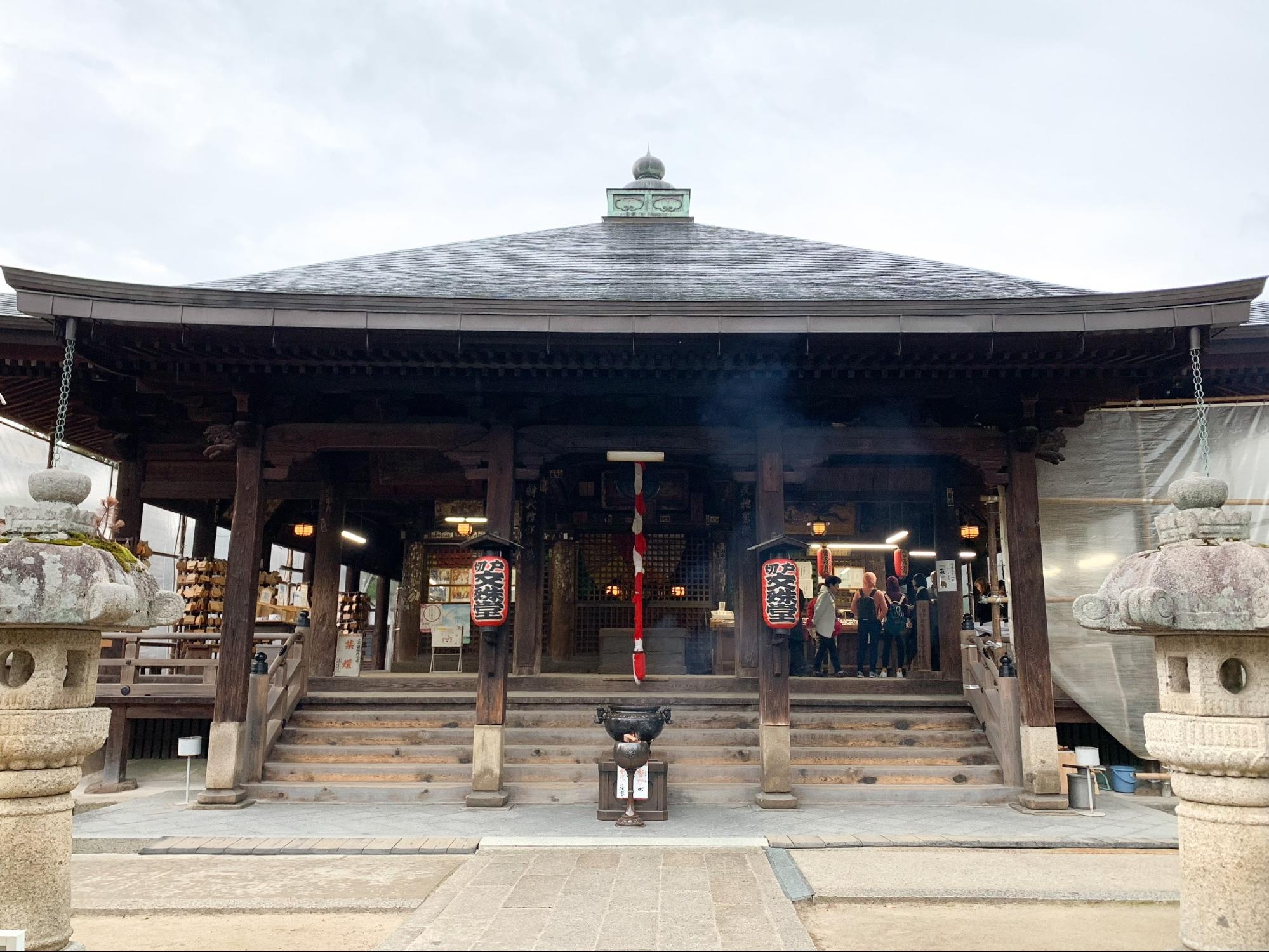
Ine Town
From Amanohashidate, you can take an hourly bus to Ine Town, a modest fishing village known for its funaya (boathouses) which line the bay. Of the 230 funaya along Ine Bay, the oldest are believed to have existed since the 1700s.
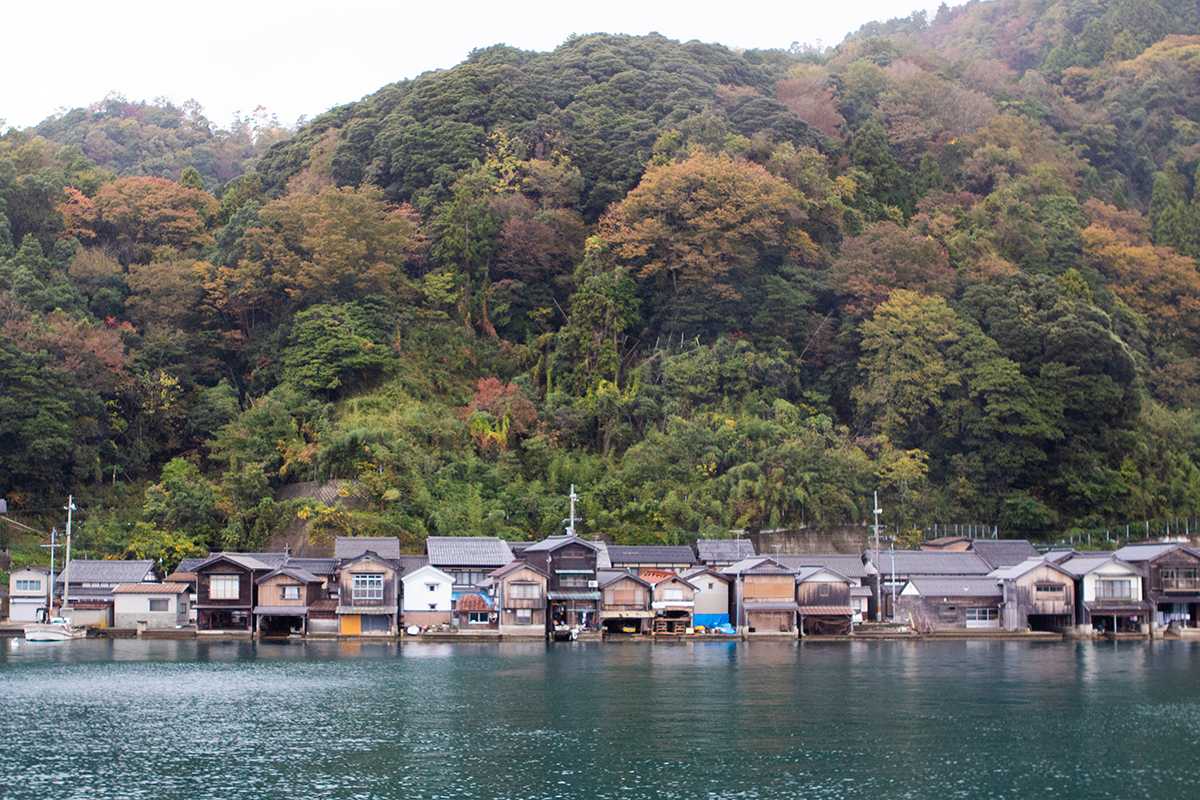
Hop on the Ine Bay Boat Tour (680 yen per adult) to have a look at these unique boat garages from the bay or approach the Ine Town Tourist Information centre for an up-close tour of one of the boathouses. Some of the boathouses are even available for a night’s stay; lodging is limited so be sure to book your accommodation early!
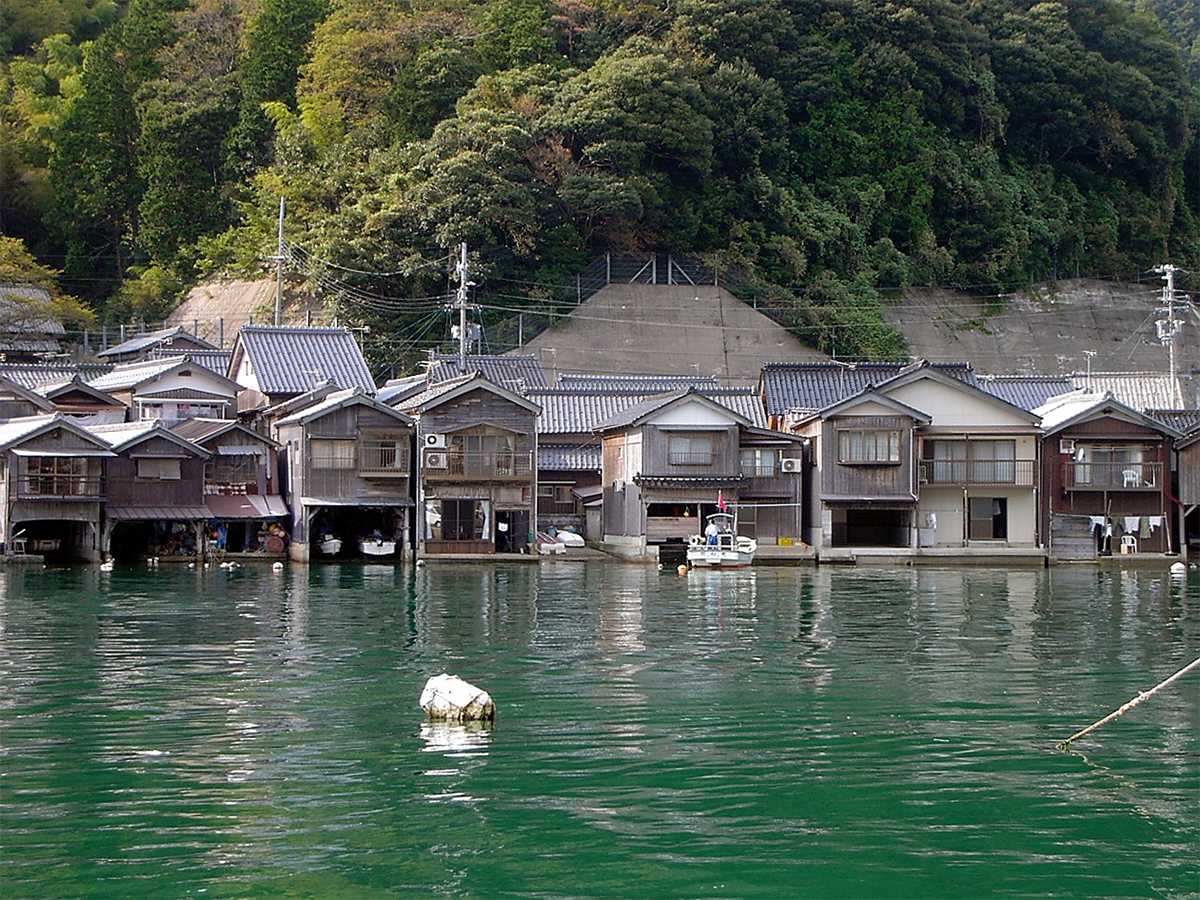
Image credit: Kyoto by the Sea
Kyoto by the Sea also has a thriving sake scene with a total of 12 sake breweries in the area – a prominent one being Mukai Brewery in Ine. Established in 1754, the brewery is currently headed by one of the only female master brewers in Japan and is known for its signature Ine Mankai sake – a sweet, fruity sake, identifiable by its unique red hue.
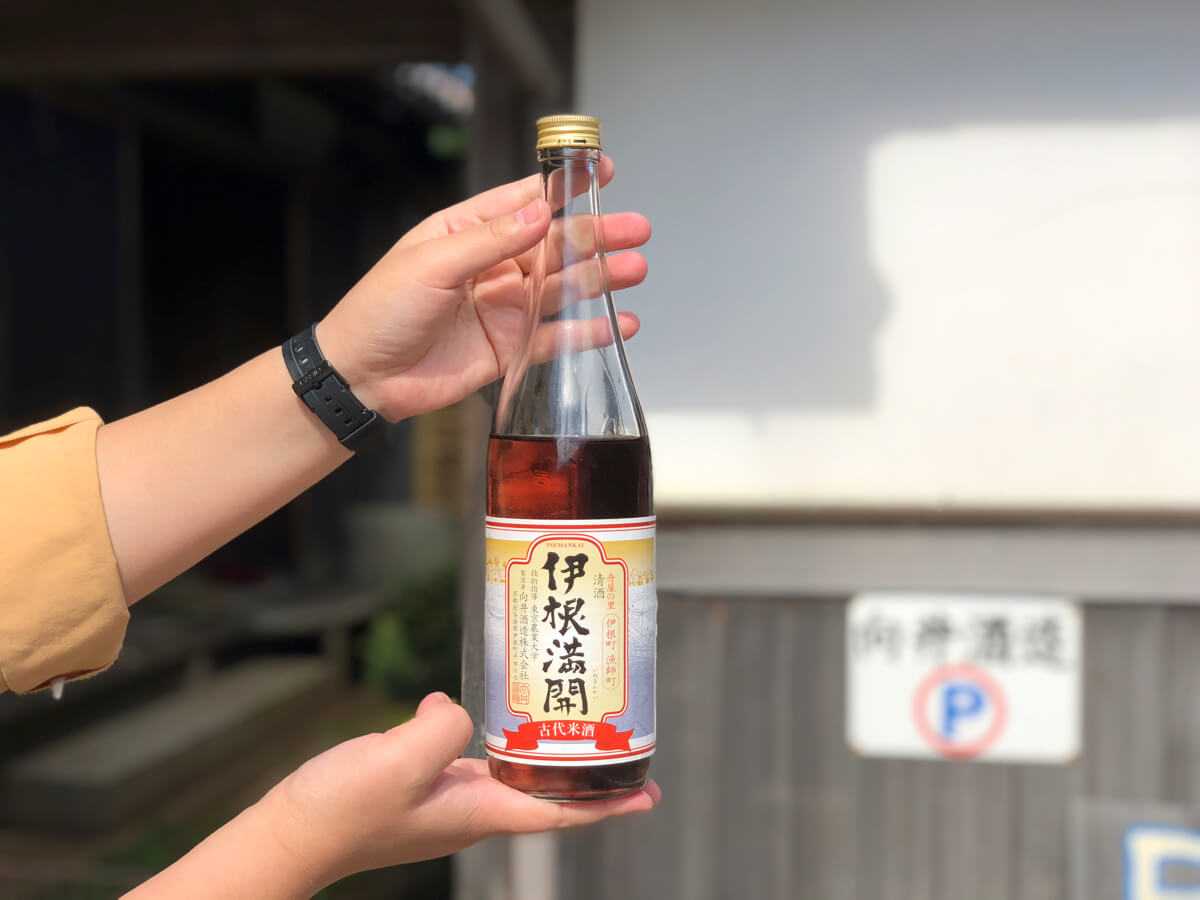
Image credit: Moshi Moshi Japan
If you’re in the area from November to March, Ine is also famed for its ine buri (yellowtail fish), being home to one of Japan’s largest yellowtail fisheries. Enjoy the fresh, fatty yellowtail sashimi-style, or in a buri shabu, a hot pot dish served with thinly sliced yellowtail, gently cooked in a light dashi broth.
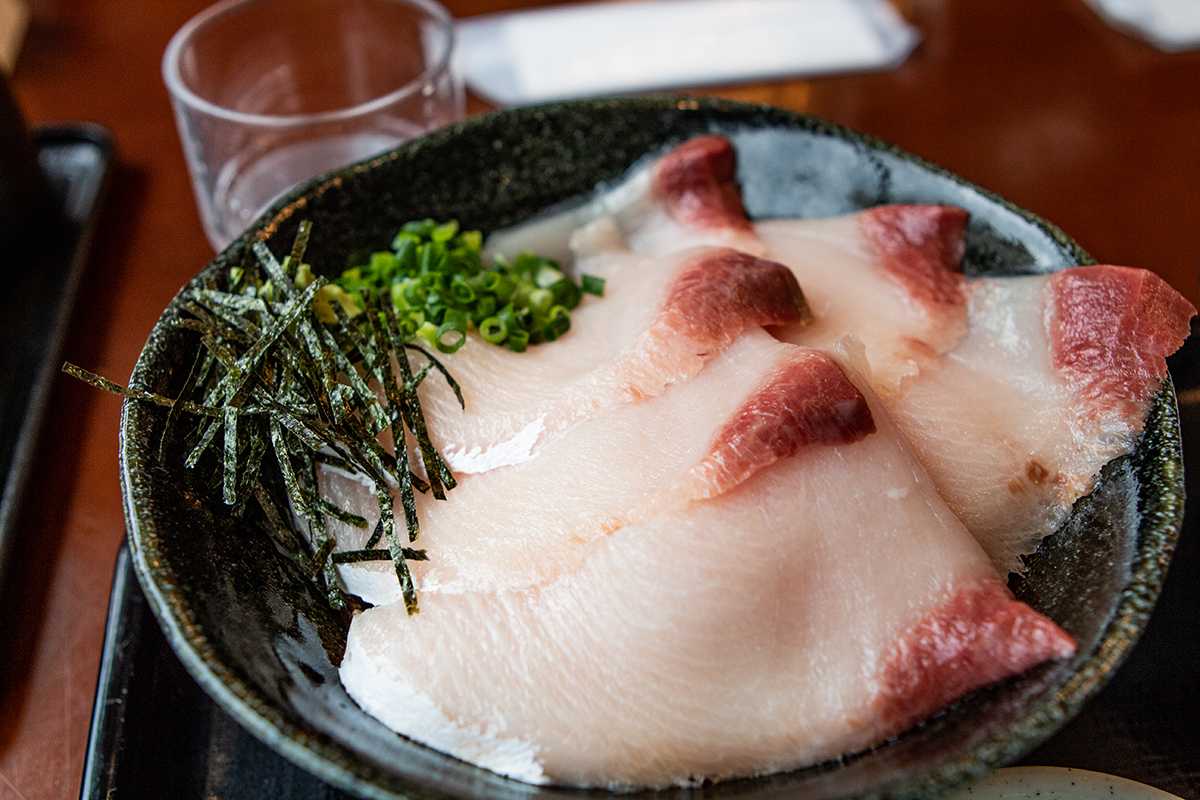
Kyotango City
A 40-minute drive from Ine Town is Kyotango City, a modern city well-known for its Taiza crabs (from November through March) and as one of the major producers of Tango Chirimen (an embossed woven silk fabric used in high-end kimonos).
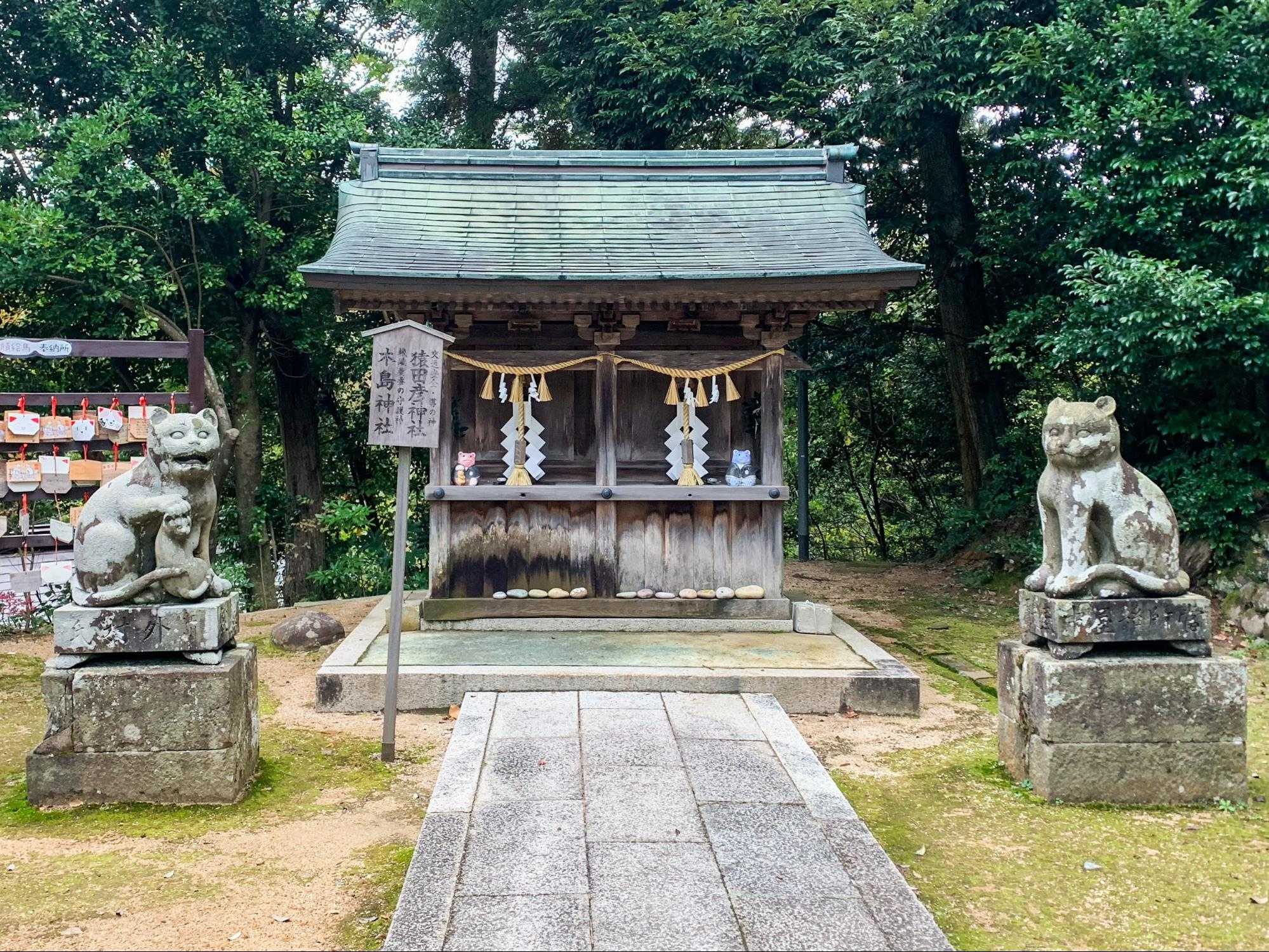
Learn about the reverence that the Kyotango people accord to the Tango Chirimen industry at Kotohira-jinja Shrine, a shrine that also famously attracts neko (cat) lovers from all across Japan! The shrine features a pair of guardian cats instead of dogs, believed to rid of the mice that affect the cultivation of silkworms and silk.
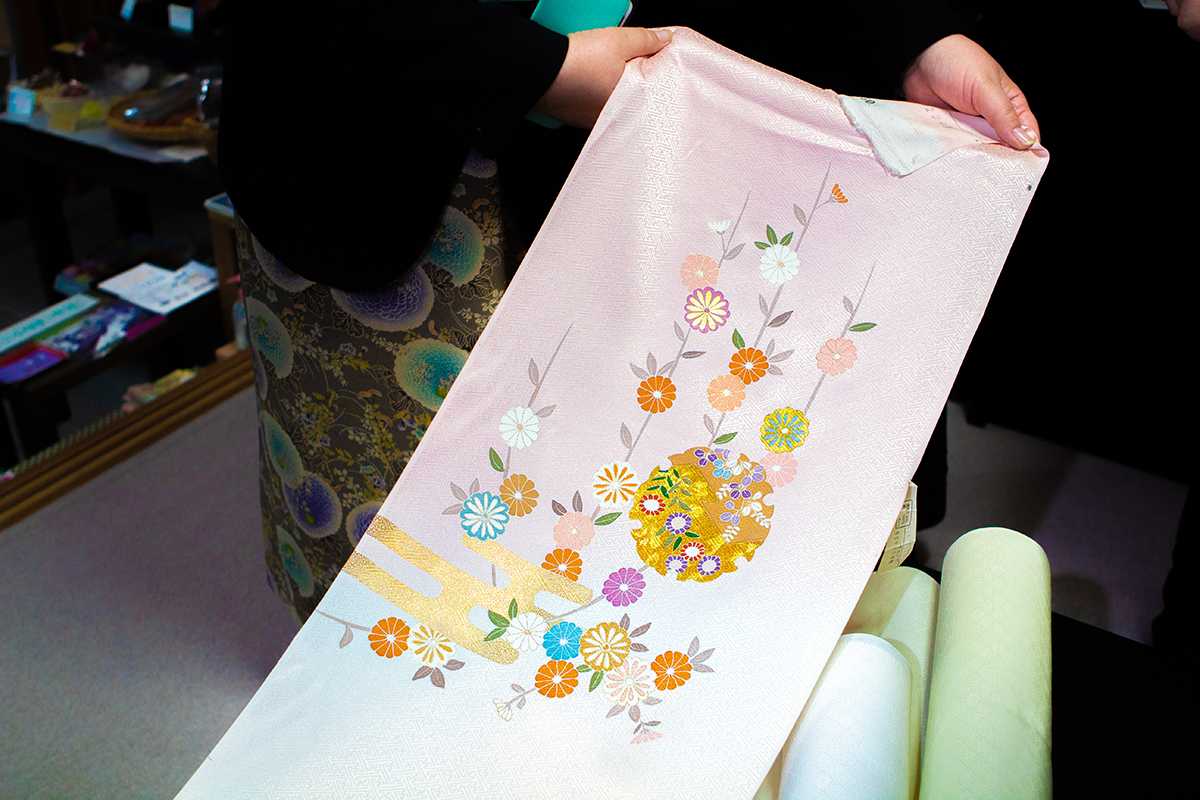
In fact, the Kyoto by the Sea region is known to be the hometown of Toyouke-no-okami (God of Food and Textiles) and there is even a Chirimen Street in Yosano Town where you can learn all about the history and craftsmanship of Tango Chirimen.
Apart from its flourishing Tango Chirimen industry, Kyotango City is also recognised for its impressive beaches, one of which is Kotohikihama Beach, or the singing sand beach. Due to the unique composition and presence of quartz in the sand, a pleasant whistling noise is emitted when you walk along the beach.
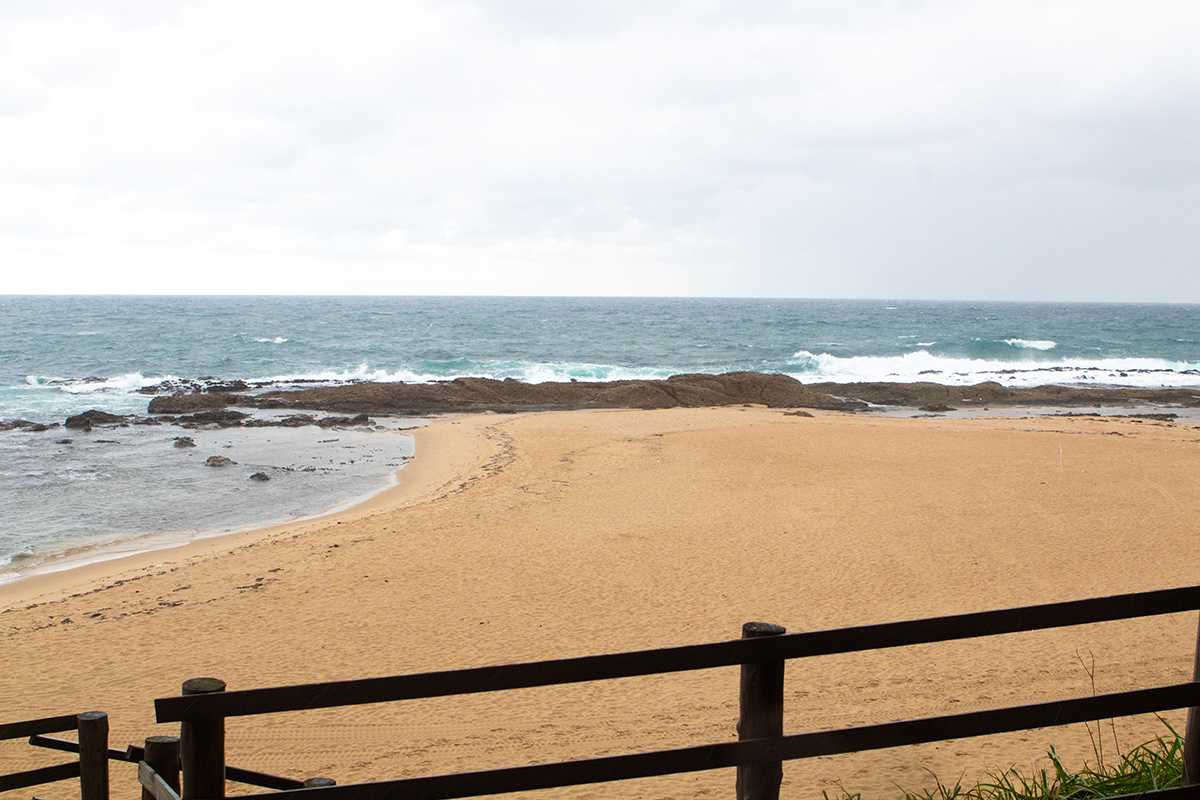
As one of the most well looked after beaches in Japan, you’ll be sinking your toes into some of the cleanest and most pristine sand in the country. In fact, the beach has a “no smoking” rule − the first beach in Japan to have that policy enacted!

The most popular time to visit is in the summer but even in the hotter months, don’t forget to take a dip in the natural hot spring tucked away in a corner of the beach! Pay a visit to the Kotohikihama Singing Sand Museum as well, and learn everything there is to know about the beach, including conservation and clean-up efforts.
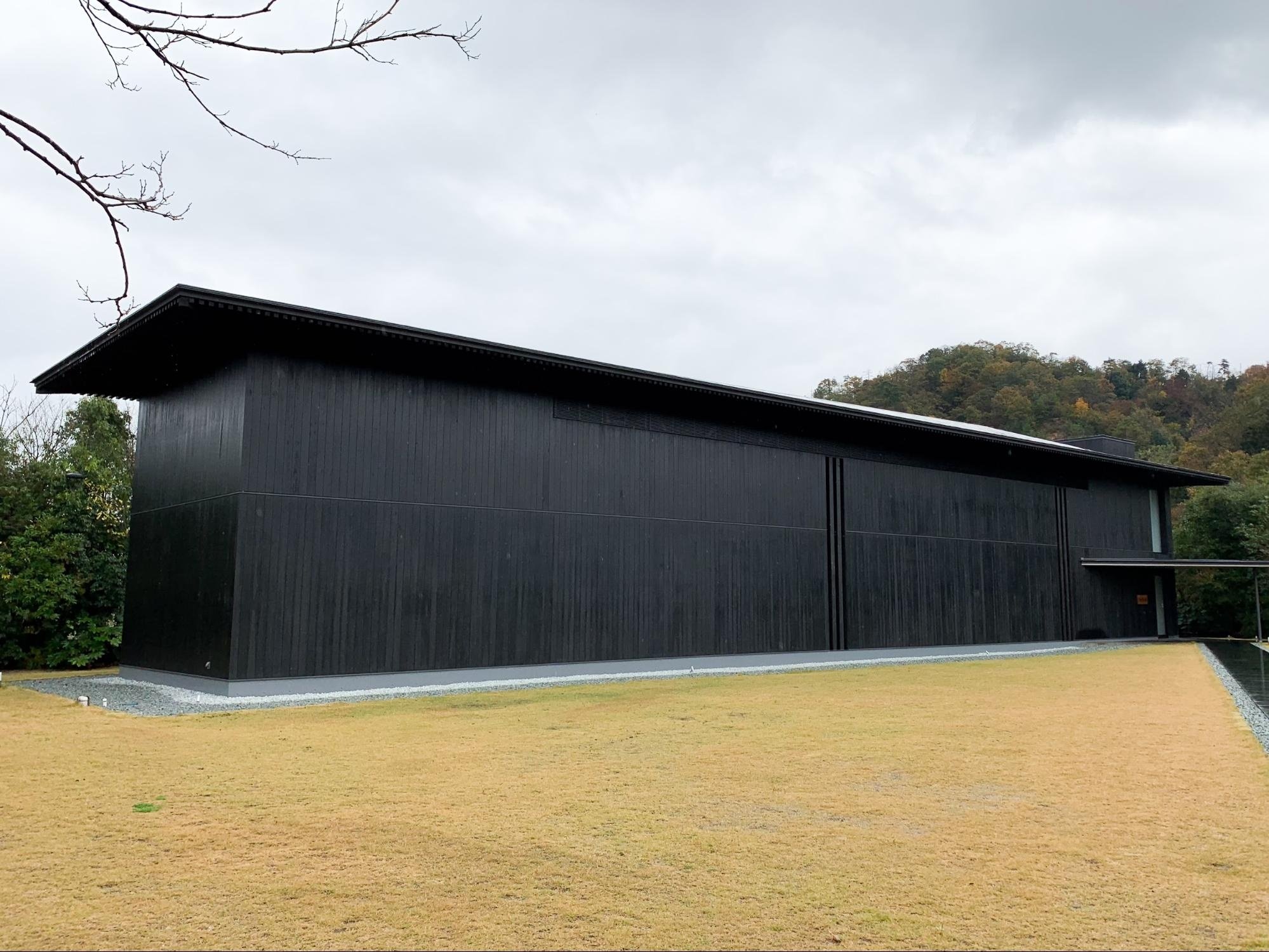
However, what gives Kyotango City its unique charm is not just its rich culture and scenic beauty, but how the city embraces old meets new and man-made meets nature. An embodiment of this is the newly opened Wakuden Mori, a contemporary art museum situated amongst lush greenery, designed by the famous Japanese architect, Tadao Ando.
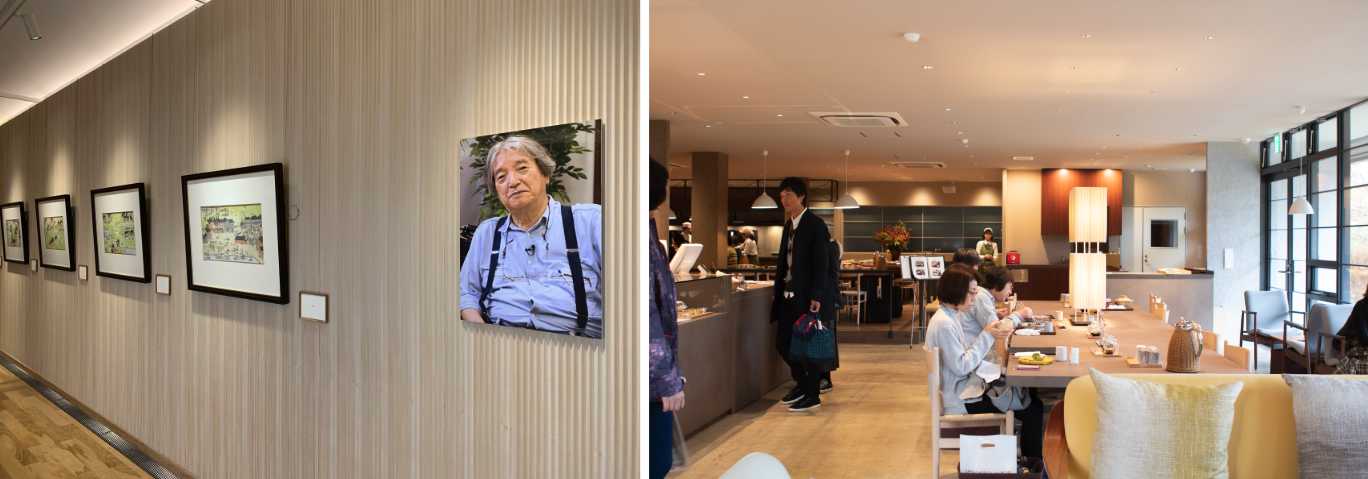
Despite its stark, black facade, the museum is designed to blend into its natural surroundings and the long corridors within the museum seek to transport you into the whimsical world of Mitsumasa Anno, a famous Japanese children’s author and watercolourist. Kobo Restaurant Wakuden Mori is also located on its grounds, where you can indulge in a light and refreshing meal that perfectly complements your gallery-viewing experience.
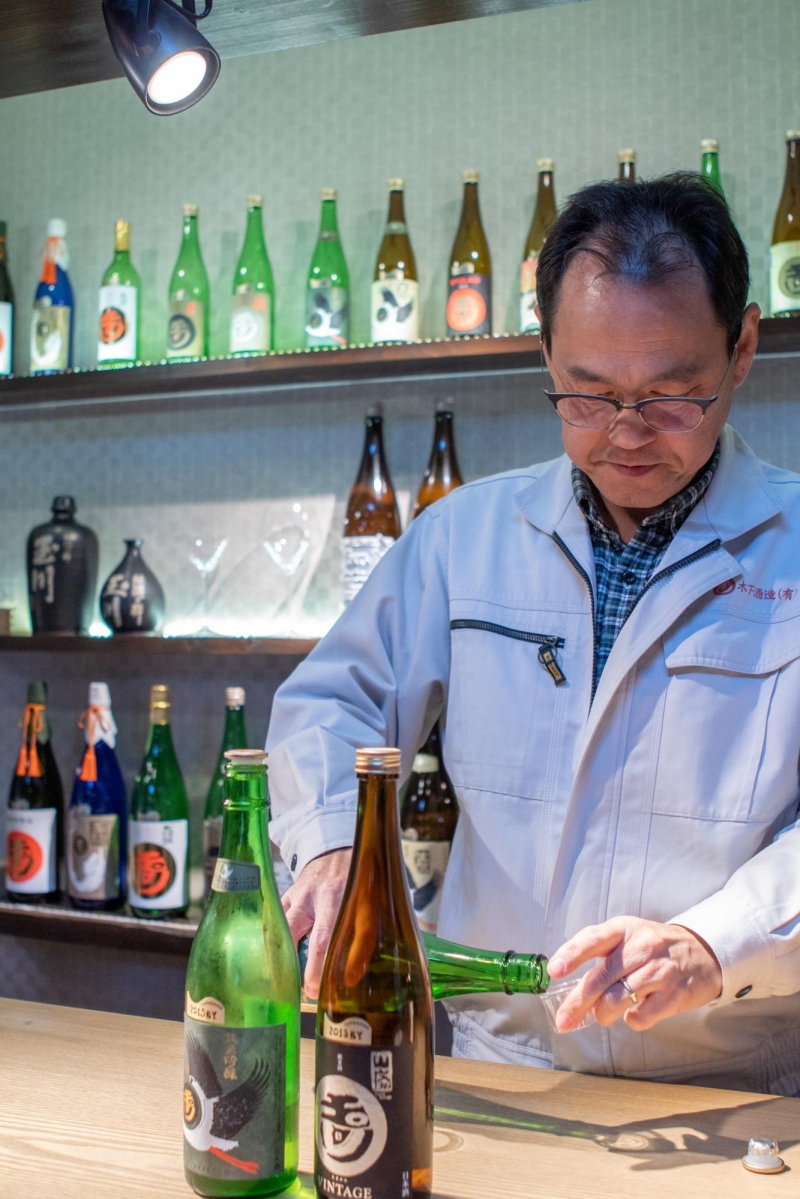
And these modern influences carry over to age-old Japanese practices like sake brewing as well. Headed by master brewer, Philip Harper, who hails from the United Kingdom, Kinoshita Sake Brewery experiments with innovative and unconventional techniques in its sake brewing. Its experimentation with ageing in its sakes has produced a number of award-winning brews, with a distinctive character that you’d be hard-pressed to find anywhere else in Japan.
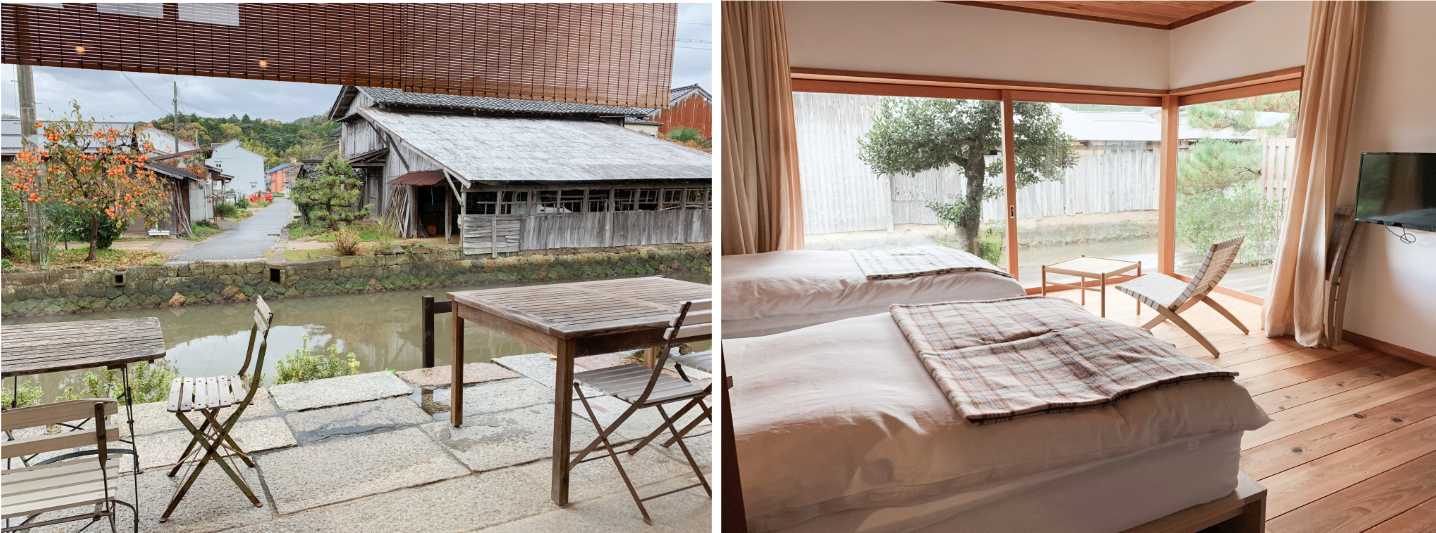
And just like any modern city, Kyotango City has its fair share of contemporary and hipster cafes. Just 2 km away is Heron Waterside Cottage, a restaurant and bed and breakfast serving home cooked Western-style dishes, made with locally sourced ingredients. Enjoy a sponge cake on the patio or book a stay on the property to admire the stunning views of the passing river from your bedroom window.
Toyooka City
Located in the northeast of Hyogo Prefecture is Toyooka City, a city known for its beautiful coasts, as well as geoparks, wetlands and traditional townscapes. Locals and tourists alike also flock to the region for its Tajima beef, purported to be the genetic origins of popular premium wagyu like Kobe beef.

Kinosaki Onsen Town
Other than a taste of the best beef in Japan, no visit to Toyooka is complete without a visit to Kinosaki Onsen Town, located conveniently at JR Kinosaki Onsen Station. With seven public baths and over 70 accommodations, the town of Kinosaki is said to be one big ryokan, with the station as its entrance.
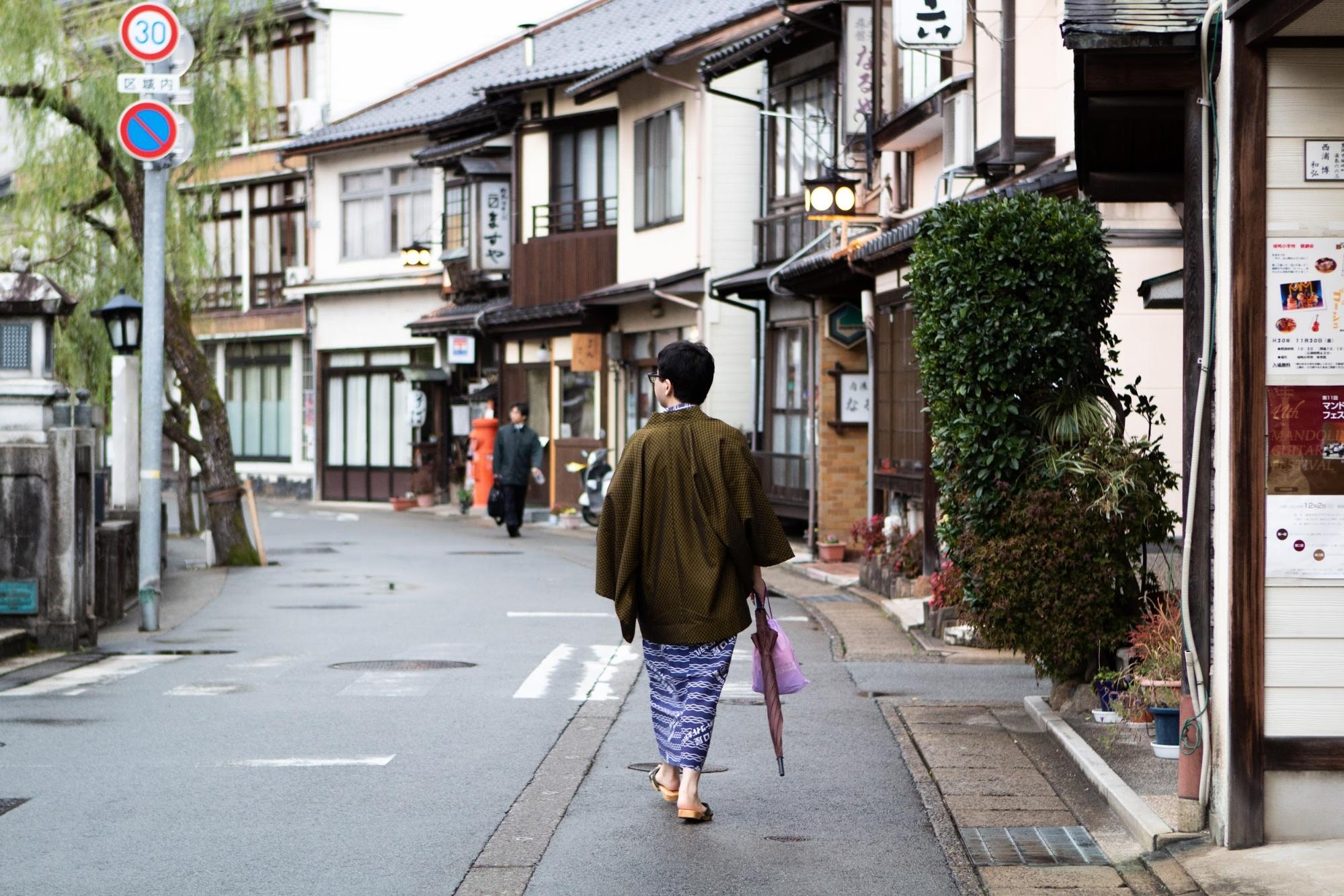
Hence, while yukatas (light cotton kimonos) are typically loungewear for the home, it’s actually encouraged to walk the streets of Kinosaki in one, complete with a pair of geta (traditional Japanese wooden sandals).
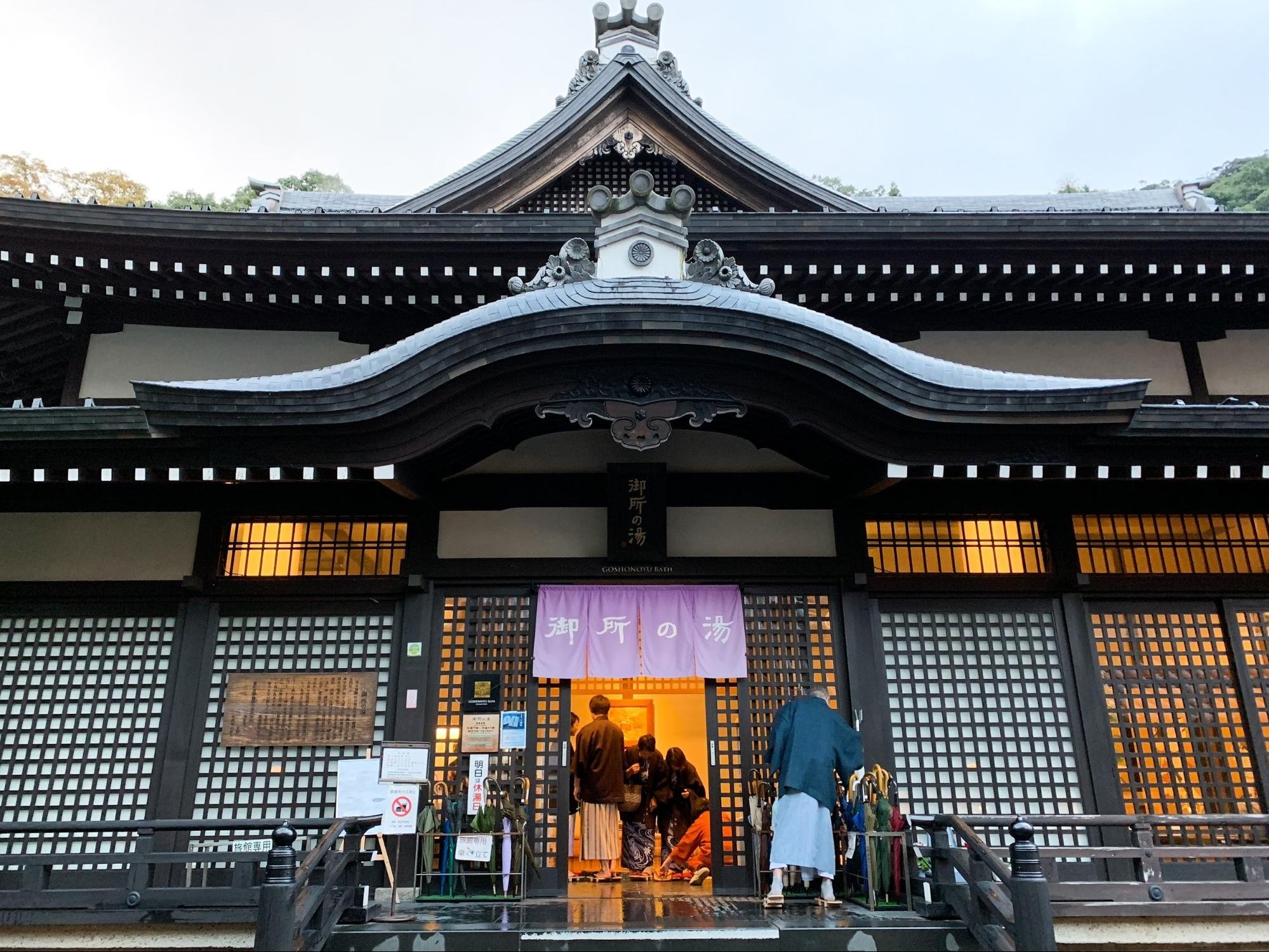
A stay at any of the accommodations in Kinosaki will provide you with your own yukata and grant you access to all seven public bath houses but if you’re there for just a day, there are yukata rental shops available and a day pass ticket to all seven public bath houses. Onsen-hop through the town and find comfort in the rhythmic “karan-koron” clacking sounds of your geta!
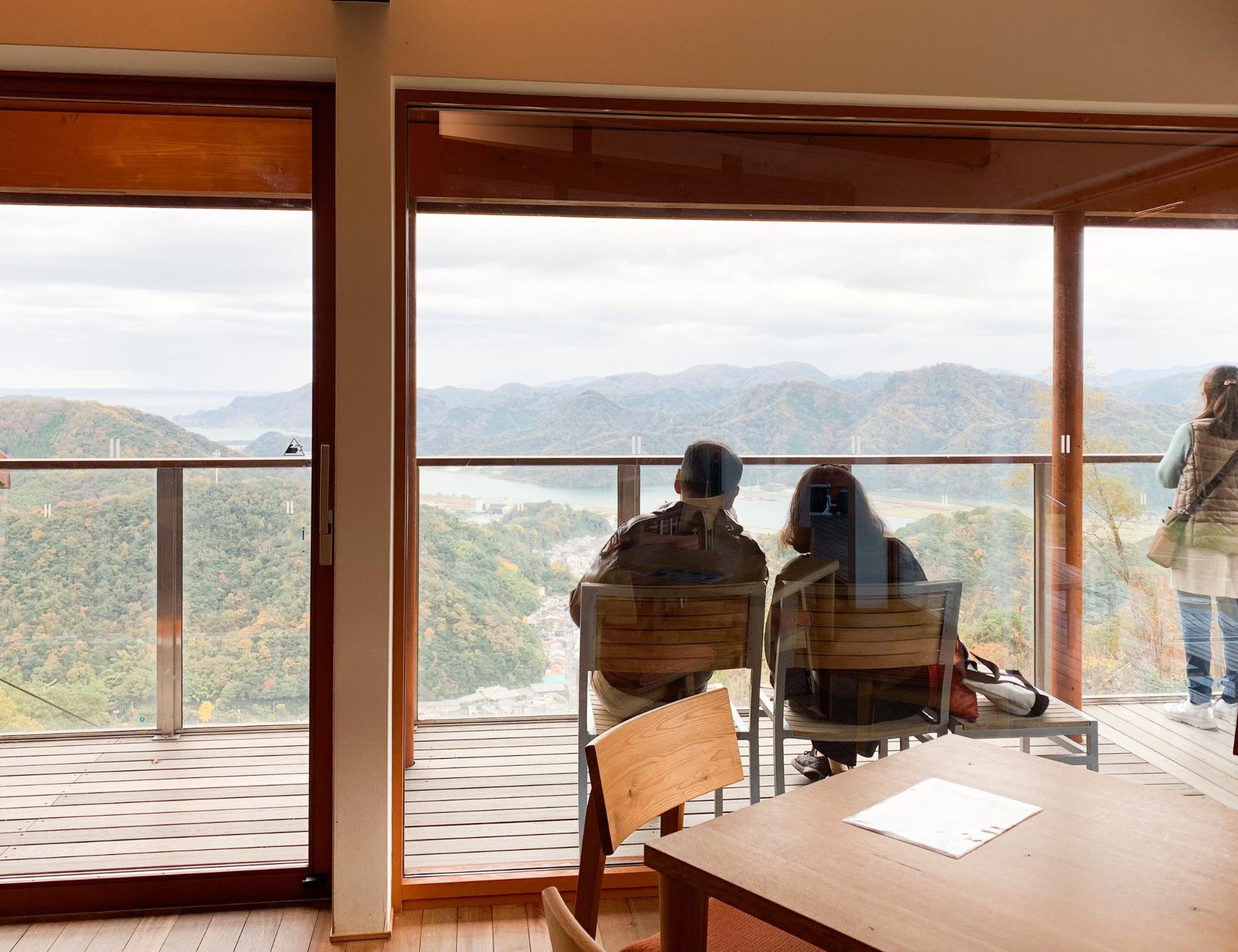
After a hot soak in one of the baths, take the Kinosaki Onsen Ropeway up to the peak of Mount Dashi for Michelin-starred views of Kinosaki and its surroundings (the view from Mount Dashi was awarded one star in the Michelin Green Guide Japan)! Revel in the views from the viewing platform or while enjoying a hot cuppa at Kinosaki Coffee Miharashi Terrace Cafe.
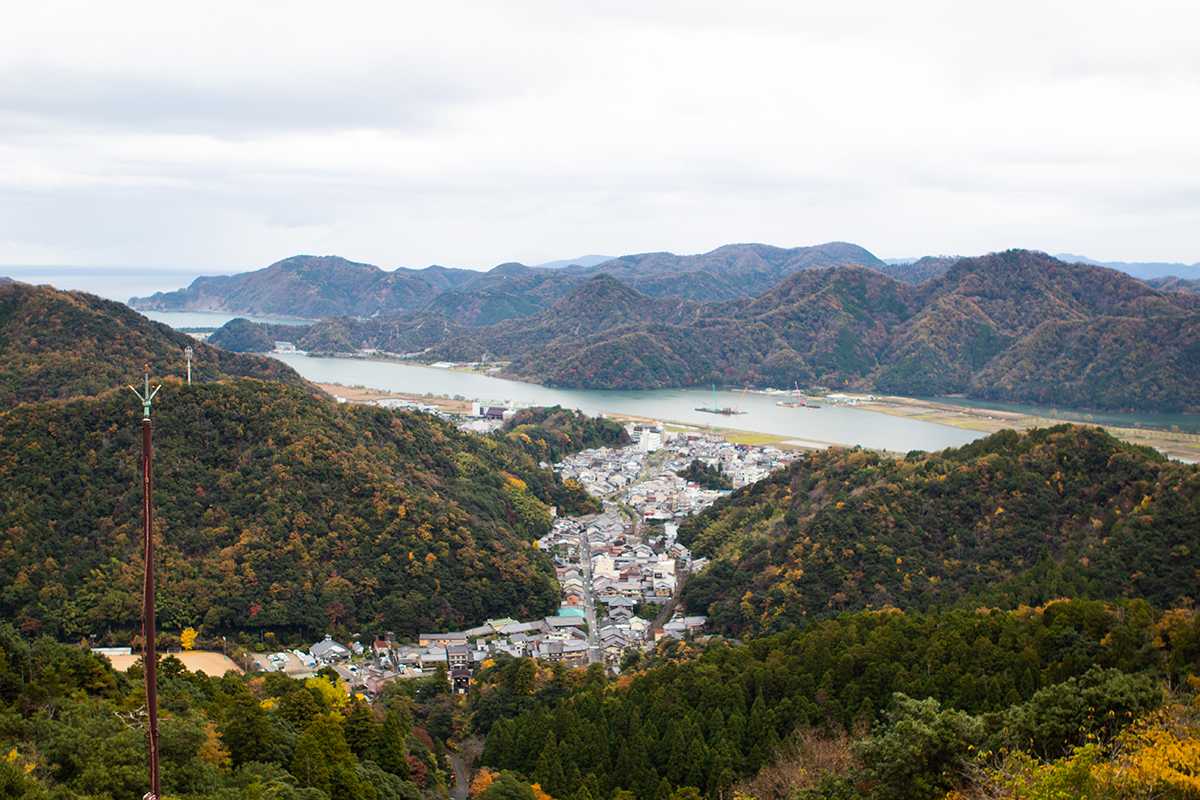
On the way back down, pay a visit to Onsenji Temple, a temple dedicated to a Buddhist saint who, according to legend, was responsible for bringing spring water to Kinosaki. It is also where a two-metre high, 11-headed Goddess of Mercy statue is enshrined, carved from a single piece of Japanese cypress wood. Protecting the people of Kinosaki for the last 1,300 years, the statue is only displayed to the public every 33 years, with it currently being on display from April 2018 to April 2021.
If this once in a lifetime opportunity isn’t good enough reason to visit Kinosaki, we don’t know what else is!
Genbudo Park
A short bike ride away from Kinosaki Onsen Town (you can rent one from the Kinosaki Onsen SOZORO Tourist Information Center) is Genbudo Park, a cave site that is part of the San’in Kaigan UNESCO Global Geopark. Be awed by the imposing cave structures, formed through volcanic eruptions dating back to 1.6 million years.
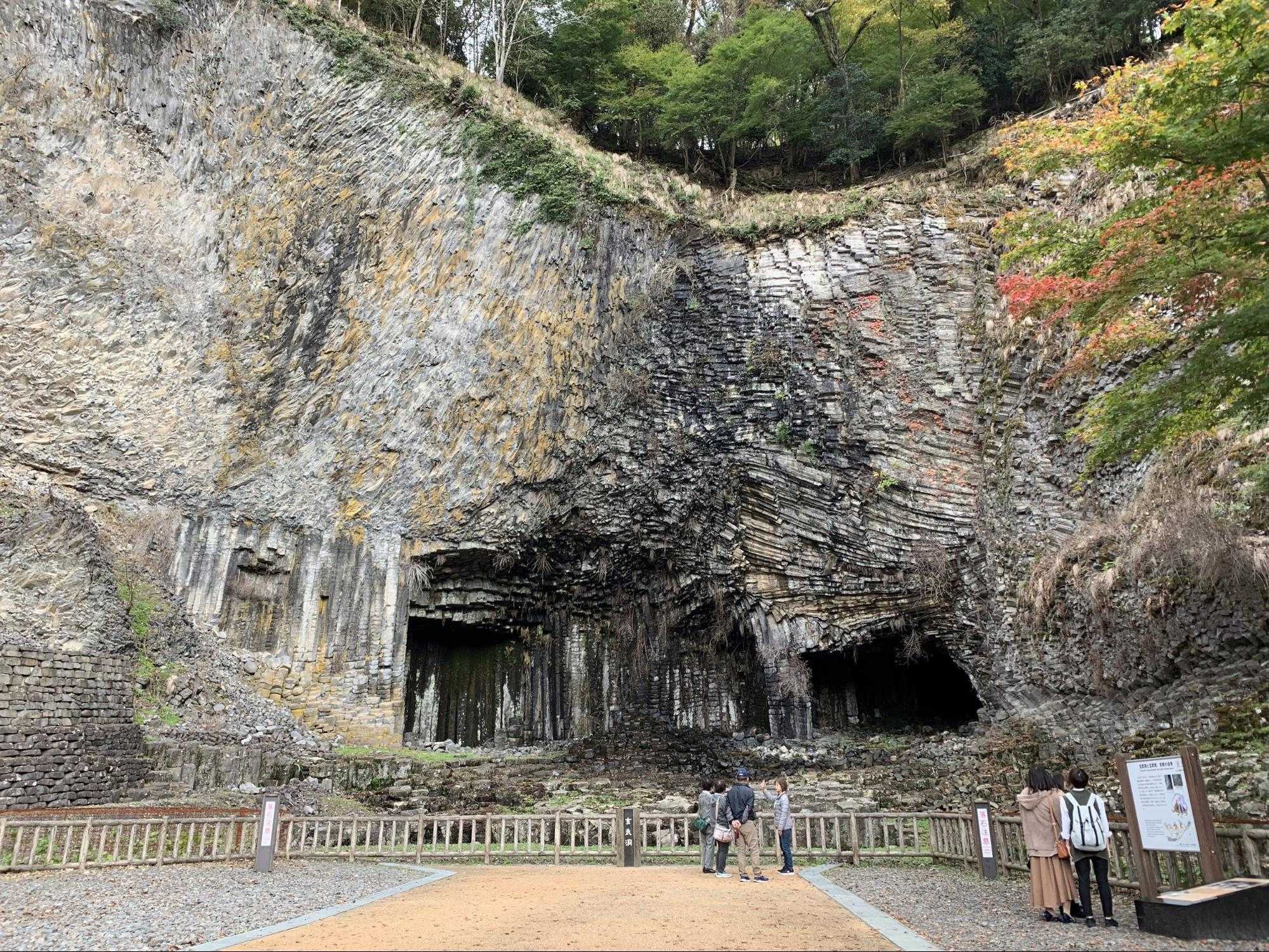
Take a deep look into the quarry caves of Genbudo Cave or admire the alluring columnar joints of the Seiryudo Cave – both declared as national reserves in 1931.
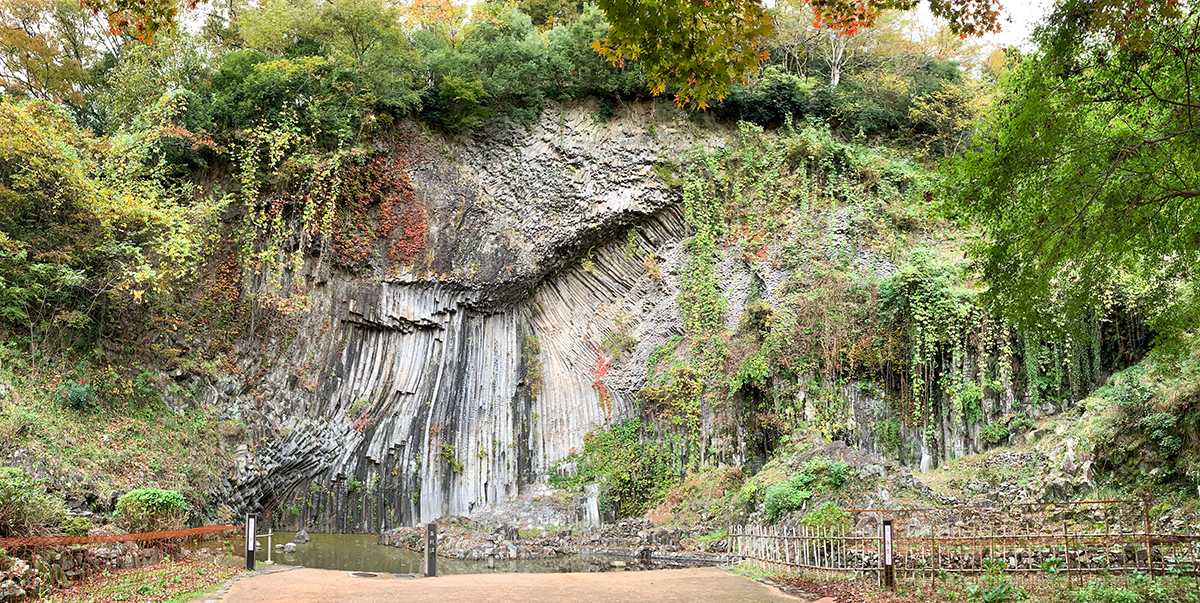
Hyogo Park of the Oriental White Stork
Slightly further away is the Hyogo Park of the Oriental White Stork, a place that holds much significance to the ecology and agricultural practices of Toyooka City.
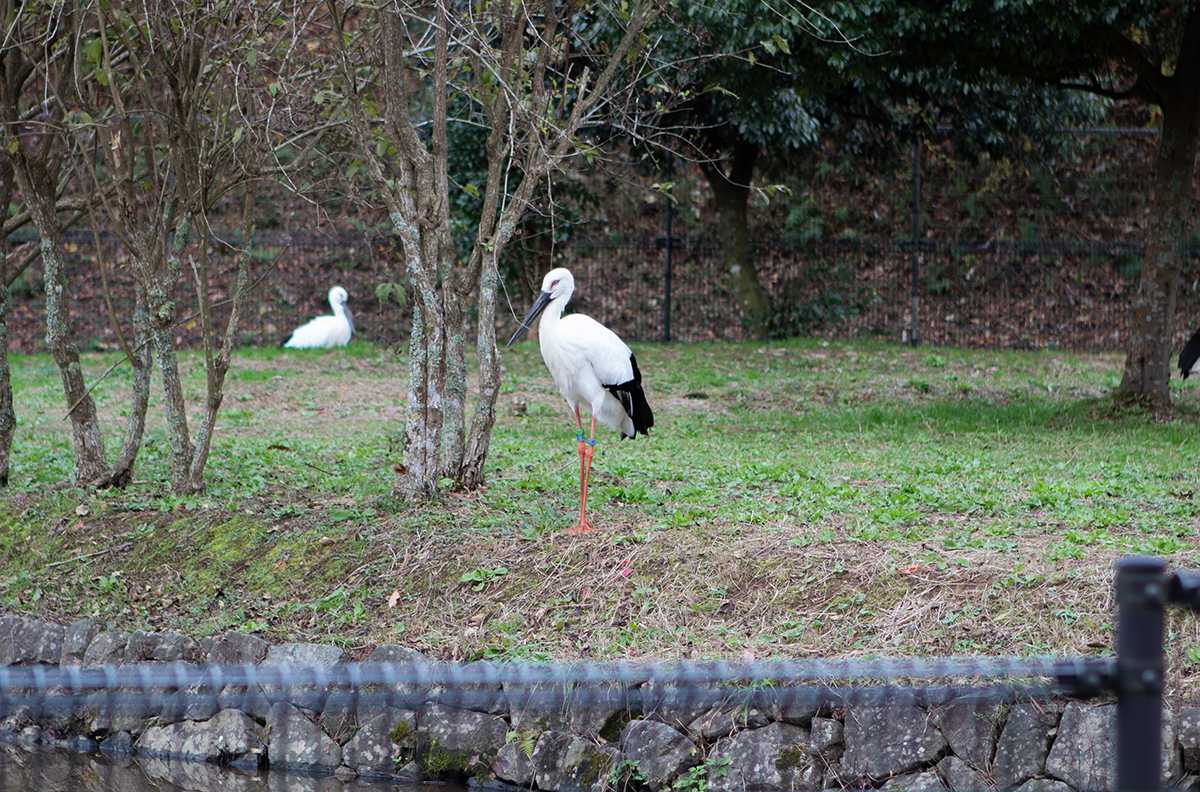
Before the war, an abundance of Oriental White Storks once soared through the skies of Japan. However, as a result of modernisation, the storks slowly disappeared and were declared to be extinct from Japan in 1971. With the help of a donation of chicks from Russia in 1985, the Oriental White Storks have since been reintroduced into the Toyooka skies and the area has adopted stork-friendly farming methods to create a rich community and environment for the storks to thrive in.

Image credit: Discover Tajima (left), Hyogo Park of the Oriental White Stork (right)
Learn more about the Reintroduction of the Oriental White Stork Project at the Toyooka Municipal Museum of the Oriental White Stork and view the majestic storks up-close at the Public Breeding Cage. You can even try to catch the storks in the wild in the surrounding wetlands – just remember to bring a pair of binoculars!
Izushi Castle Town
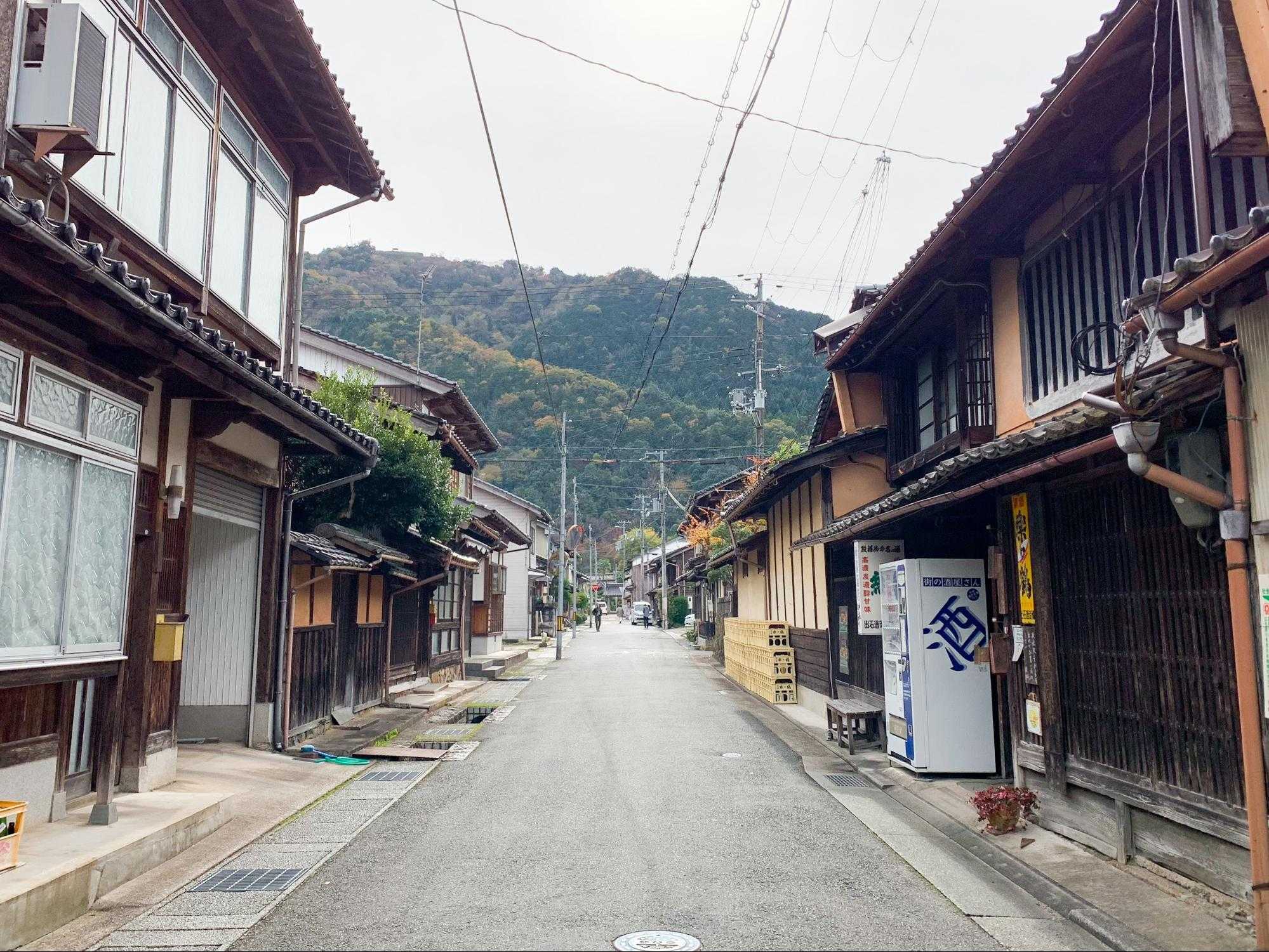
An hour’s bus away from Kinosaki Onsen is Izushi, a prosperous castle town dating back to the Edo period. Great efforts to preserve the traditional townscape have been undertaken, and you can admire the Showa (retro) style shops and buildings that line the streets, as well as the Shinkoro clock tower that has become the symbol of the town.
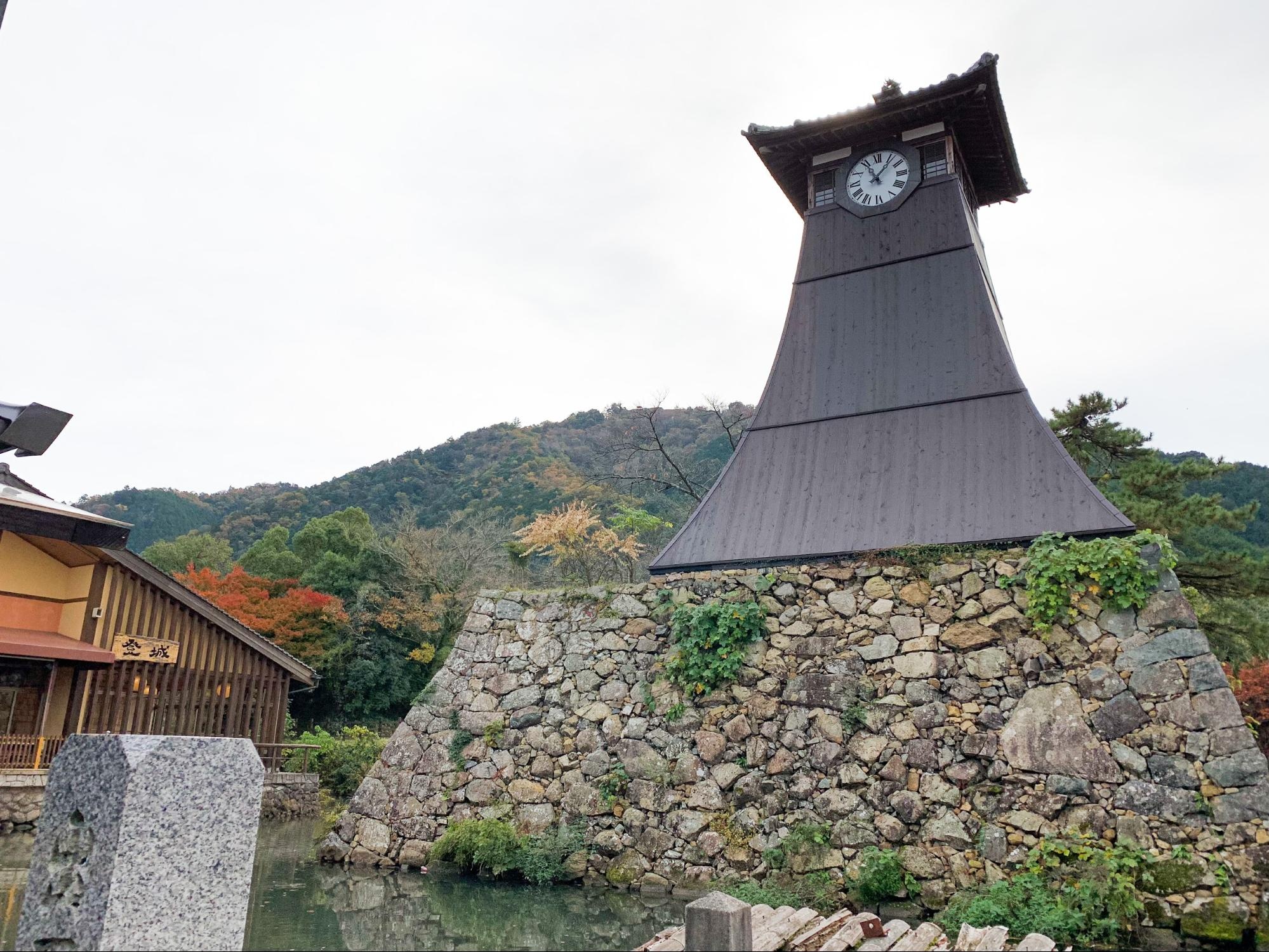
One of the highlights of Izushi is the Izushi Castle Ruins, the remnants of a castle built in 1604 by a samurai of the Sengoku period.
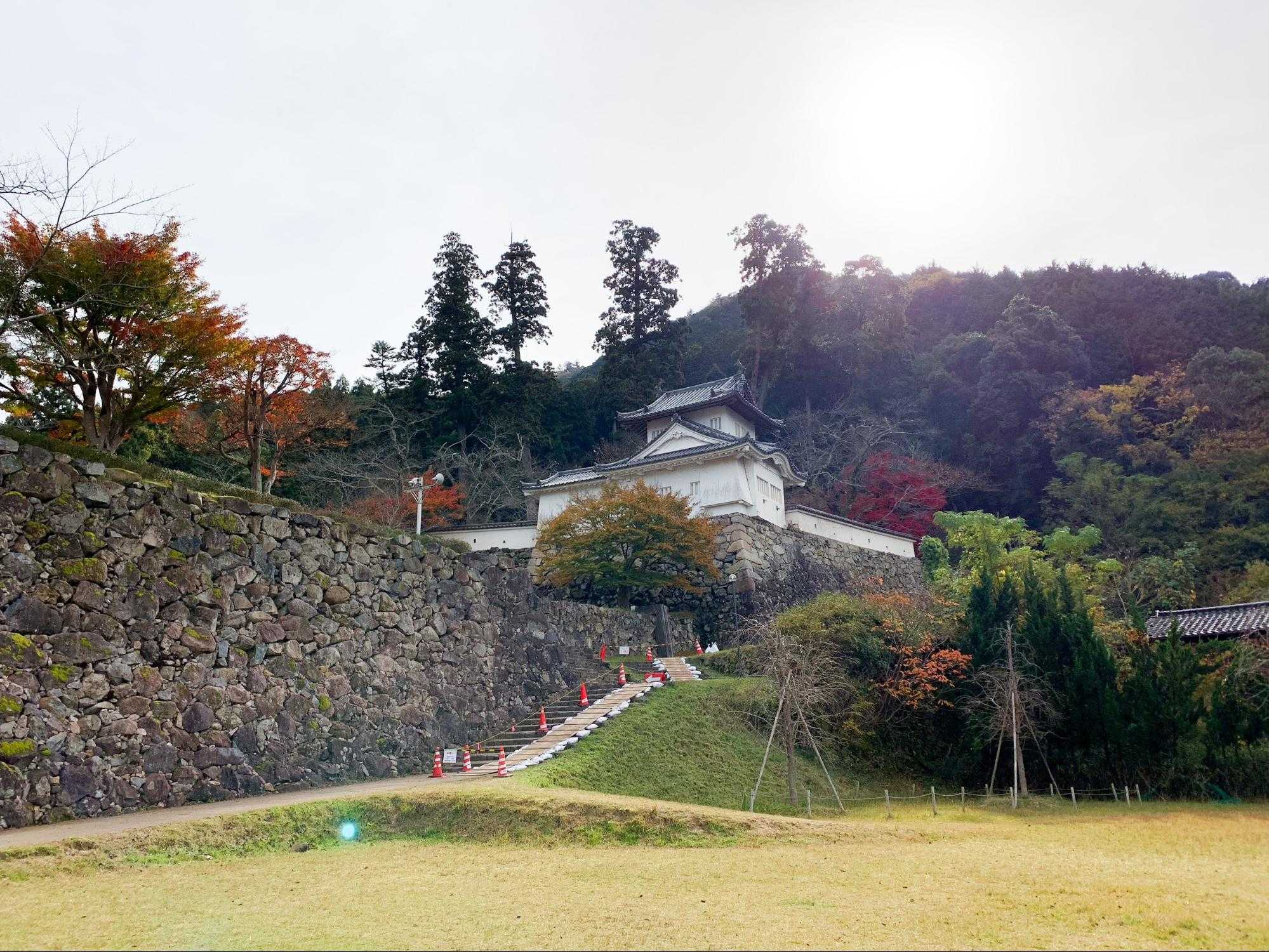
Adjacent to that, you’d find a stone staircase lined with vermilion torii gates that lead up to the Arikoyama Inari Shrine. Admire the row of strikingly beautiful torii gates – similar to the ones found at Fushimi Inari Shrine in Kyoto – but without the touristy crowds!
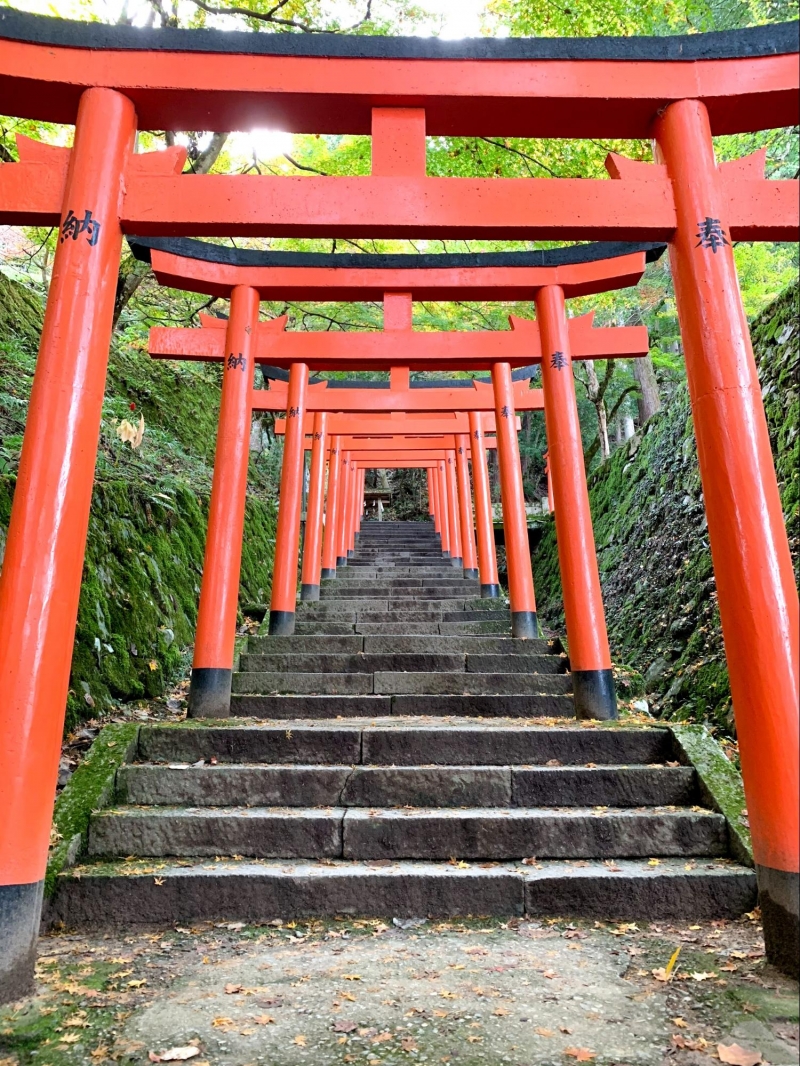
Located at the foot of Arikoyama Mountain, the shrine also offers breathtaking and expansive views of the beautiful Izushi townscape below.
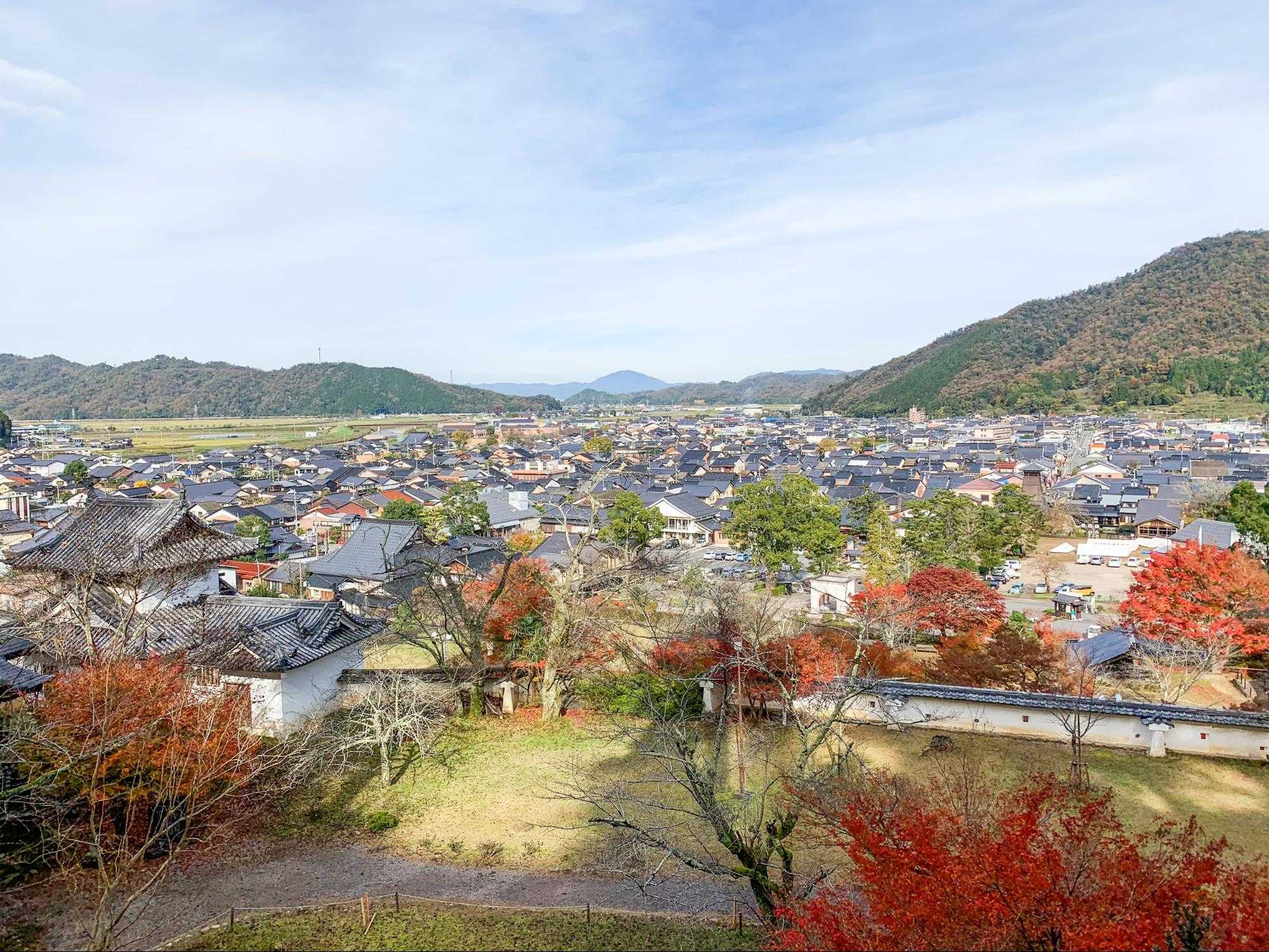
A focal point of Japanese culture and tradition, Izushi Castle Town is also home to Izushi Eirakukan – the oldest kabuki (a classical Japanese dance-drama) theatre in the Kinki region – and Takumi Terauchi – the most sought-after wicker basketry artisan in Japan.
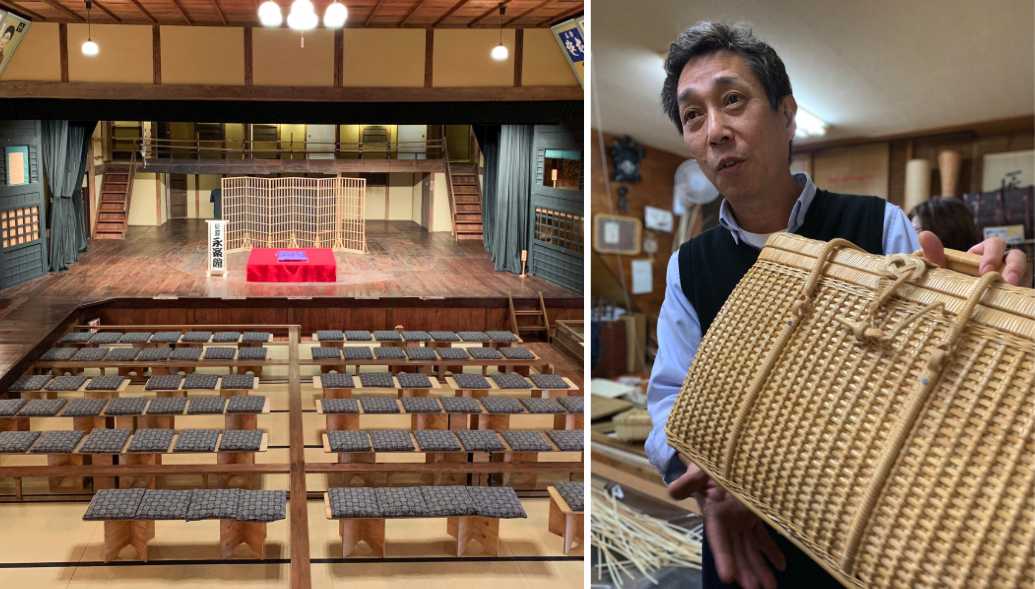
And like most cities and towns in Japan, Izushi is known for its own signature food and dishes – the Izushi Sara Soba. Unlike traditional soba, this buckwheat noodle dish is served in small portions on special Izushi porcelain plates, hence the name sara (plated) soba.
It is eaten with a special dipping sauce and an array of condiments – including spring onions, wasabi, yam and raw eggs – and the resulting sauce can be mixed with the sobayu (the hot water in which the soba was boiled) to be enjoyed as a broth.
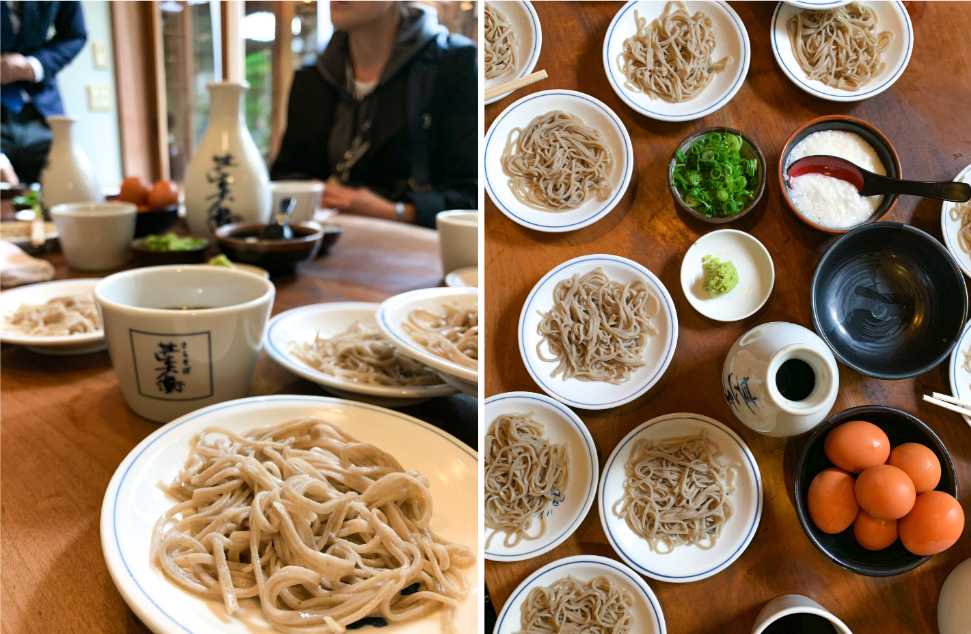
From to Kyoto by the Sea to Toyooka City, Northern Kansai is an undiscovered treasure in Japan, offering much-needed respite from the neon lights of Osaka and the busy streets of Tokyo. Dig in to the freshest crabs and sake, while enjoying the rich culture, beautiful Japanese townscapes and scenic landscapes; it is simply the best of Japan that we know and love.
For more information, you can find out more from Visit Northern Kansai at NATAS Travel Fair, happening from 22 to 24 February 2019 at Singapore Expo, or head to Visit Northern Kansai’s website and Facebook page.
Brought to you by Relation Japan.

